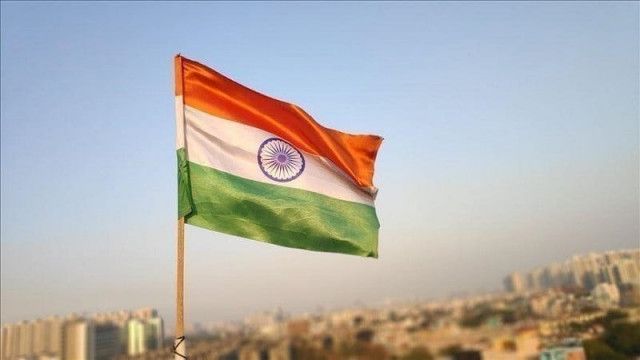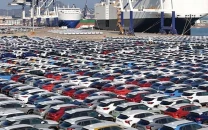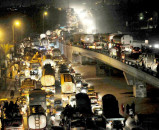A supply-side India
Economic liberalisation, rising incomes stimulate Delhi’s rapid growth

Significant economic reforms have helped India to become one of the fastest growing nations in the world. With a population of 1.4 billion people, India has a diverse economy with a growth outlook that overshadows most of its Asian peers.
Economic liberalisation and rising incomes have stimulated India’s rapid growth in trade across the globe with foreign direct investment (FDI) increasing significantly, notably from the United States. India has become an attractive investment destination for capital seeking stable rates of return.
India’s real GDP growth of 8% in 2023 surpassed China’s and all OECD countries. But economic success has not come easily, as the Indian government and its people have followed a long and difficult path.
Between 1947 and 1991, India’s “Licence Raj” economy underperformed many of its Asian peers, including Pakistan. India’s steps towards economic reforms came following a balance of payments crisis in July 1991, during which its foreign exchange reserves collapsed.
To deal with the situation, the Indian government under the then finance minister Manmohan Singh and Planning Commission deputy chairman Montek Alhuwalia opted for conditional credit from the International Monetary Fund (IMF).
The IMF agreed on one condition: India would need to radically accelerate the pace of reforms the IMF first enumerated for India in the late 1970s – reforms that, since their inception, had not been implemented properly.
On the verge of disaster, India had no choice but to fully embrace the reforms. The reforms initially focused on fiscal consolidation, abolishing industrial licensing, liberalising trade policies and de-pegging exchange rates – the hallmarks of the six pillars of supply-side economic policies.
Beginning in the late 1990s, the government initiated reforms in the financial sector. At this time, it also attempted to strengthen the competitive environment, announced plans to privatise some public sector enterprises, de-administered the pricing of petroleum products and gradually devolved some legislative and revenue-raising powers to state governments.
A primary goal at this stage of reforms was to reduce the fiscal deficit from its 1990 level of 8.4% of GDP. The government was concerned that, if the deficit were to remain at such levels, it would soon not be able to make payments without drastic changes to tax rates or expenditures.
When considering how to trim the deficit, the government felt certain key elements of expenditures – provision of high-quality health care, broad-based educational development, adequate housing, etc – were important for development and, therefore, reduction in these areas should be avoided.
Alternatively, a cut in the government’s capital expenditure would be politically easier but ultimately less desirable because of the negative impact these cuts would have on infrastructure and future growth. Hence, the best option was to look for ways to increase government revenues.
On the revenue side, the single largest component is taxation. Within the broad types of taxation, governments have at their disposal both direct methods (comprising personal income tax and corporate tax) and indirect methods (including sales and excise tax and customs duties).
With many of the indirect methods of taxation being off the table or not able to generate enough revenues to substantially impact the deficit, the Indian government turned to direct taxation as a way to collect more tax revenue and reduce the fiscal deficit. Yet it did so in a rather unconventional manner: it didn’t raise taxes, it lowered them.
During a period of persistent budget deficits, passing a policy of lower tax rates is certainly controversial. A lower tax rate, in a static environment, will bring less revenue, of course, leading to growing budget deficits and lower tax collection.
In fact, the opposite happened, tax revenues actually rose. Some economists, unfamiliar with the power of supply-side incentives and the Laffer Curve, came to the conclusion that revenue would be 25% lower. However, they were immediately proven wrong when results of the first year of the experiment were released.
Tax revenues rose in US dollar terms by 3.18% on average between 1991 and 1996 and by 8.86% between 1997 and 2002.
The revenue results came as no surprise to anyone who has followed the history of supply-side economics. The economy responded to incentives. All major economic indicators including private consumption, government consumption, private investment and exports showed significant gains over this period.
Prior to the tax cuts, many Indians would understate their incomes or fail to file tax returns entirely. Without the tax cuts of the 1990s, compliance would have only been more difficult as filers would have been facing higher rates and a more complex code.
In a dynamic sense, one powerful reason that lower tax rates tend to generate more income is because they have a tendency to simplify the tax code.
The simplification results in more efficient administration and elimination of discretionary exemptions and leads to fewer national resources consumed in tax planning, tax dodging or rent seeking. These resources can then be shifted to more productive or valuable areas.
Since then, India has never looked back to the IMF and has sustainably grown over the last two decades with average growth rates of 8%, and this degree of economic growth has produced strong gains in the real per capita income, a higher 30% investment-to-GDP ratio, robust exports (merchandise and services combined) at $765 billion and foreign exchange reserves at $648 billion.
In 2017, India introduced a long-awaited national goods and services tax, which resulted in inter-state trade rising from 23% of GDP to 35%, underpinning growth and further increasing tax revenues.
If India’s supply-side leadership took the bold and correct steps towards economic prosperity, so why can’t we in Pakistan?
The writer is a philanthropist and an economist based in Belgium
Published in The Express Tribune, April 22nd, 2024.
Like Business on Facebook, follow @TribuneBiz on Twitter to stay informed and join in the conversation.



















COMMENTS
Comments are moderated and generally will be posted if they are on-topic and not abusive.
For more information, please see our Comments FAQ